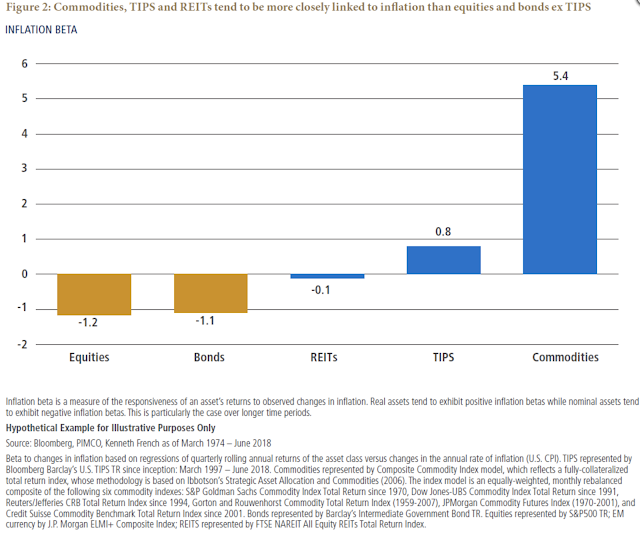There is a correlation between commodity investing and inflation. Commodities do well late in the business cycle when bonds usually underperform and inflation is heightened. Research work by PIMCO measures the inflation beta for some major asset classes. Stocks have a negative inflation beta even though earning should rise with inflation. Bonds as a nominal asset show a strong negative beta. Real estate which should be a real asset is neutral to inflation. TIPS have a beta that is close to one which is consistent with the underlying construction of the security. Commodities have a very large inflation beta that can be used to take advantage of inflation concerns. Still, this high inflation beta may be a concern for some investors.
Thinking holistically, a large inflation beta means that a smaller allocation change may be necessary in order to offset inflation risk in other parts of the portfolio and generate the right global outcome. However, this means that any sector bet tied to commodity beta indices is highly exposed to inflation risk. If the higher inflation never materializes, investors may be overexposed to this inflation beta and see strong commodity underperformance. This is a classic problem of thinking about risk at the portfolio versus asset class level. Portfolio risk should be the focus, but investors are not immune to scrutiny at the sector level.
The inflation beta can be adjusted through changing the exposure to commodities, or it can be restructured or blended through exposure to alternative risk premia that look to commodities for strategy but not directional commodity risk. Alternative risk premia in carry, value, momentum, or volatility can allow investors to take advantage of the changing dynamics in commodities without pure directional and inflation beta risk. For example, a combination of beta risk and risk premium exposures can smooth returns while still allowing for controlled inflation exposure.
A potential increase in inflation is a good time to rethink the factor risk exposures in a portfolio. First, what is the current inflation beta for the portfolio? Second, what is the desired inflation portfolio beta? Third, how is that inflation beta going to be achieved? While inflation is at or above the 2% target in the US, it is still not too late to think about the right inflation beta for a portfolio.

